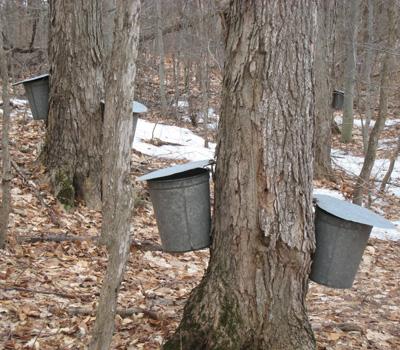Evaluating the Growth Potential of the Maple Industry in the Northern Forest

Maple sugar production is economically and culturally important for Northern Forest residents. Less than 1% of available trees are tapped for syrup production in the U.S., and USDA Forest Service Forest Inventory Analysis data reveal an abundant maple resource throughout the Northern Forest region. Using inventory data and landowner surveys, NSRC researchers documented significant potential to expand this industry.
Density of maples within a stand is a greater limiting factor than distance of trees to an access road. Considering these factors, there are over 300 million potential taps from sugar and red maples in the region. Only 2.5% of the optimal sugarbushes in the U.S. are tapped for sugaring, yet in Vermont this utilization rate is 27%. Despite the low tapping rate, a higher percentage of landowners, especially from New England, had positive attitudes towards using their land for syrup production. Landowners identified concerns including loss in sawtimber value, lack of interest and knowledge in the sugaring process, time and labor constraints, and lack of accessible maples.
By developing a Net Present Value calculator that accounts for over 30 variables per individual tree, researchers determined that leasing taps for at least five years and eventually harvesting trees is the most profitable long-term management strategy for most situations. Analysis of public policies revealed differences among states and provinces in government resources devoted to maple research, extension, and promotion, cost-sharing programs, policies for tapping on public land, and property tax programs encouraging syrup production. Overall, the industry is poised for expansion, and long-term pricing and profitability will help drive the rate of growth.
